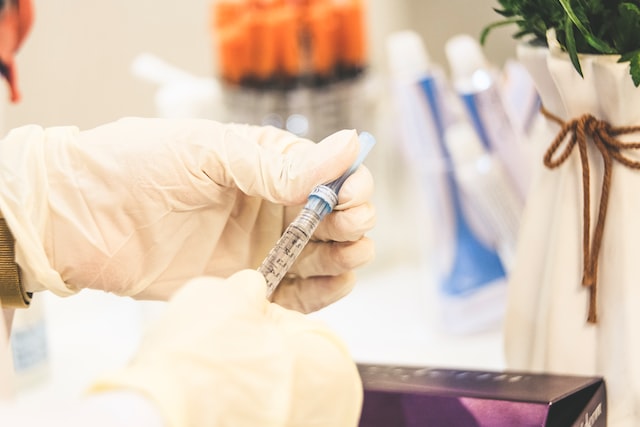Before we dive deep into the PESTEL analysis, let’s get the business overview of Johnson & Johnson (J&J). Johnson & Johnson is a multinational corporation that operates in the healthcare industry. The company was founded in 1886 and is headquartered in New Brunswick, New Jersey, USA. Johnson & Johnson has three main business segments: Consumer Health, Medical Devices, and Pharmaceuticals.
The Consumer Health segment includes products sold over the counter or without a prescription, such as baby care, skin care, oral care, women’s health, and wound care products. Some well-known brands in this segment include Johnson’s Baby, Neutrogena, Aveeno, Listerine, and Band-Aid.
The Medical Devices segment includes a wide range of products, such as surgical equipment, diagnostic equipment, orthopedic products, and contact lenses. Some well-known brands in this segment include Acuvue, Ethicon, and DePuy Synthes.
The Pharmaceuticals segment includes prescription drugs for various diseases and conditions, such as cancer, immunology, neuroscience, infectious diseases, and cardiovascular and metabolic diseases. Some well-known brands in this segment include Remicade, Stelara, Xarelto, and Zytiga.
Johnson & Johnson operates in over 60 countries and employs over 135,000 people globally. The company is strongly committed to corporate social responsibility and has been recognized for its efforts in sustainability, diversity and inclusion, and social impact.
J&J reported 2022 consolidated sales of $94.9 billion and net earnings of $17.9 billion, with Pharmaceutical contributing $52.6 billion, Consumer Health $15 billion, and MedTech $27.4 billion.
Here is the PESTEL analysis of Johnson & Johnson (J&J)
A PESTEL analysis is a strategic management framework used to examine the external macro-environmental factors that can impact an organization or industry. The acronym PESTEL stands for:
- Political factors: Relate to government policies, regulations, political stability, and other political forces that may impact the business environment.
- Economic factors: Deal with economic conditions and trends affecting an organization’s operations, profitability, and growth.
- Sociocultural factors: Relate to social and cultural aspects that may influence consumer preferences, lifestyles, demographics, and market trends.
- Technological factors: Deal with developing and applying new technologies, innovations, and trends that can impact an industry or organization.
- Environmental factors: Relate to ecological and environmental concerns that may affect an organization’s operations and decision-making.
- Legal factors: Refer to the laws and regulations that govern businesses and industries.
In this article, we will do a PESTEL Analysis of Johnson & Johnson (J&J).
PESTEL Analysis Framework: Explained with Examples
Political
- Healthcare Regulations and Policies: Governments worldwide implement and change healthcare policies, which can directly affect Johnson & Johnson. The extent to which healthcare is privatized or nationalized, the approval process for new drugs, and the setting of drug prices are all significant concerns.
- Trade Policies: As an international entity, Johnson & Johnson is affected by trade policies, tariffs, and international trade agreements. Political decisions on these matters can influence J&J’s profitability and operational strategies.
- Public Health Campaigns: Governments often launch public health campaigns that can either boost or hinder certain product categories. For instance, campaigns to raise disease awareness can indirectly increase demand for specific treatments offered by J&J.
- Government Funding and Partnerships: In some regions, J&J might partner with governments for public health initiatives, research, or product distribution. Political changes can impact the flow of such partnerships.
- International Relations: Geopolitical tensions can influence J&J’s operations in specific countries. For example, if Country A has strained relations with Country B, and J&J has significant operations or sales in both countries, this could impact the company’s strategy.
- Regulations on Clinical Trials: Political decisions on the ethical aspects of clinical trials, patient consent, data handling, and the overall approval process can significantly affect J&J’s pharmaceutical segment.
- Response to Health Crises: Government responses to health crises, such as pandemics or outbreaks, can influence demand for J&J’s products and services, as seen during the COVID-19 pandemic.
Johnson & Johnson (J&J) SWOT Analysis
Economic
- Economic Growth Rates: The economic health of countries where J&J operates can significantly impact sales. For instance, countries with rising GDPs often witness higher healthcare expenditure, which can benefit J&J’s product range.
- Exchange Rate Fluctuations: Being a multinational company, J&J deals in multiple currencies. Variations in exchange rates can influence profitability, costs, and product pricing.
- Interest Rates: Changes in interest rates can influence J&J’s capital structure, borrowing costs, and investment decisions. Lower interest rates encourage more significant investments in R&D or expansions due to the reduced borrowing costs.
- Consumer Spending Patterns: Economic downturns or recessions can reduce consumer spending on non-essential health products, impacting J&J’s consumer health segment.
- Healthcare Spending: The amount governments and private entities allocate towards healthcare can directly affect J&J. Increased healthcare budgets can lead to more significant opportunities for J&J’s range of products and services.
- Employment Levels: High employment rates can increase health insurance coverage in countries with employer-sponsored healthcare, potentially boosting demand for J&J’s products.
- Competitive Pricing: Economic pressures might lead to a more competitive market, prompting J&J to adjust its pricing strategies, offer discounts, or engage in more promotional activities.
- Access to Capital: The ease with which J&J can access capital markets for funding influences its ability to invest in R&D, mergers, acquisitions, and other growth strategies.
Sociocultural
- Health Awareness: As global awareness about health, wellness, and self-care rises, the demand for pharmaceutical products, over-the-counter treatments, and wellness-related products also increases. This trend positively impacts J&J’s vast array of healthcare offerings.
- Aging Population: Many regions, like Europe and parts of Asia, are experiencing an aging population. Older individuals typically have more health concerns, leading to increased demand for healthcare products and services.
- Cultural Attitudes towards Health: Different cultures have varying beliefs and attitudes toward health, medicine, and wellness. Understanding and catering to these differences is essential for J&J’s product formulations, marketing, and sales strategies.
- Consumer Trust: Trust in pharmaceutical companies and their products is paramount. Any issues, such as product recalls or safety concerns, can significantly impact J&J’s reputation. Managing public relations and ensuring high product quality is crucial.
- Lifestyle Changes: The rise in sedentary lifestyles, unhealthy diets, and associated health issues can influence the demand for certain medications and healthcare products.
- Family Dynamics: The family is the primary caregiving unit in many cultures. Products that cater to family health, infant care, and elder care can see demand based on these dynamics.
- Social Stigmas: Certain health issues may have associated stigmas in specific cultures. Addressing these sensitively and offering solutions that respect cultural nuances is vital for J&J.
- Preference for Natural/Organic Products: A rising trend globally is the preference for natural, organic, or eco-friendly products. J&J must consider this in product development, especially in their consumer health segment.
- Gender Dynamics and Health: Understanding gender-specific health needs and concerns and developing products tailored to them can be a potential growth area.
- Healthcare Accessibility: In many parts of the world, access to healthcare is a significant concern. J&J can strategize on how to make their products more accessible to underserved populations.
Technological
- Research & Development (R&D): In the pharmaceutical and medical devices industry, R&D is crucial. New technological advancements can lead to breakthrough products or enhancements to existing products. J&J must continually invest in R&D to stay competitive and develop innovative solutions.
- Digital Health: The rise of digital health platforms, wearable devices, telemedicine, and health applications offers challenges and opportunities. J&J can leverage these technologies to enhance patient care, monitor patient health in real time, and offer more personalized solutions.
- Big Data & Analytics: With the advent of big data, companies can gain insights into patient behavior, predict market trends, improve clinical trial designs, and achieve more accurate results in R&D. J&J can utilize data analytics for better decision-making and forecasting.
- Blockchain: This technology has potential applications in ensuring the integrity of the drug supply chain, combating counterfeit drugs, and improving transparency and traceability.
- 3D Printing: Especially relevant for medical devices, 3D printing can revolutionize the production of customized implants, prosthetics, and even drugs in specific dosages.
- Biotechnology: Advancements in biotech can lead to the development of new therapies, vaccines, and treatments. J&J’s pharmaceutical division can significantly benefit from harnessing the power of biotechnology.
- Regenerative Medicine: Technologies related to stem cells and tissue engineering offer new avenues for treatments and can be a future growth area for J&J.
- Augmented Reality (A.R.) and Virtual Reality (V.R.): These can be used for medical training, patient education, and even in some therapeutic regions to enhance patient experience.
- Robotics: In surgery and patient care, robotics can offer precision and reduce human error. J&J’s medical devices segment can leverage robotics for enhanced solutions.
- Cybersecurity: As J&J increasingly integrates technology into its operations and products, ensuring the security of its digital platforms, products, and data becomes paramount.
Environmental
- Sustainability: As a global corporation, J&J faces scrutiny regarding its sustainability efforts. Companies are increasingly expected to adopt sustainable business practices, from sourcing raw materials to product disposal. J&J has been ensuring its operations are environmentally friendly and sustainable.
- Waste Management: Pharmaceutical manufacturing can generate significant waste. Proper waste management, especially hazardous waste, is vital for environmental protection and compliance with international and local regulations.
- Water Use & Conservation: Producing pharmaceuticals and medical products often requires significant amounts of water. J&J needs to ensure that its water use is efficient and that it has measures in place to treat wastewater adequately.
- Packaging: Consumers and regulators are increasingly concerned about the environmental impact of product packaging. There’s a push for eco-friendly, biodegradable, or recyclable packaging materials, which affects J&J’s consumer goods segment.
- Supply Chain Management: J&J’s supply chain can have significant environmental impacts, from the raw materials sourced to transportation. The company needs to ensure that its suppliers adopt sustainable practices and that the transportation of goods is as eco-friendly as possible.
- Biodiversity: Sourcing ingredients, especially for pharmaceuticals, can sometimes impact local biodiversity. J&J needs to ensure that its sourcing practices do not harm local ecosystems.
Legal
- Regulatory Approvals: As a pharmaceutical and medical device company, J&J’s products must gain approval from regulatory bodies such as the U.S. Food and Drug Administration (FDA) and the European Medicines Agency (EMA). These approvals are critical for product launches and market presence.
- Patent Laws: Intellectual property, especially patents, is vital in the pharmaceutical industry. J&J must ensure its products have adequate patent protection and monitor potential patent infringements. At the same time, the expiration of patents can lead to increased competition from generic brands.
- Product Liability: J&J, like other pharmaceutical and healthcare companies, is exposed to the risk of product liability claims. If any of its products cause harm or side effects, it could lead to legal actions, impacting its reputation and finances.
- Advertising and Marketing Regulations: The healthcare sector has stringent regulations about advertising and promoting drugs and medical devices. J&J must ensure its marketing practices comply with these rules to avoid legal issues.
- Antitrust Laws: Given its size and global reach, J&J has to ensure that its business practices do not violate antitrust and competition laws in the U.S. and other countries where it operates.
- Data Protection and Privacy: As a healthcare company, J&J handles a vast amount of patient and customer data. It must comply with data protection regulations, like the General Data Protection Regulation (GDPR) in Europe.
- Environmental Regulations: J&J’s manufacturing processes must comply with environmental regulations, ensuring minimal environmental impact and proper waste disposal.
- Ethical and Clinical Trial Standards: Before releasing any drug or medical device, J&J undergoes clinical trials. These trials must adhere to international ethical standards to ensure the safety and efficacy of their products.











